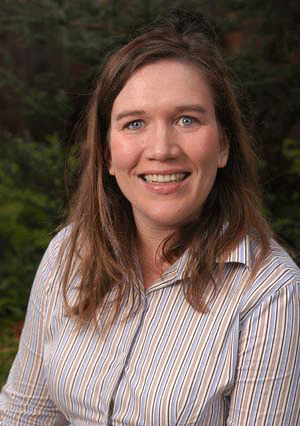

Global health threats for the twenty-first century: AIDS, bird flu, bioterrorism … and bacteria? Yes, says Professor Miriam Barlow of the UC Merced School of Natural Sciences.
“Many drug companies have stopped developing new antibiotics, and the rate at which antibiotic resistance emerges is increasing,” explains Barlow. “If we don’t understand the problem, simple infections that are easily cured now could become serious health threats.”
Barlow studies resistance genes in bacteria like Salmonella, E.Coli and Staphylococcus, the most common bugs patients catch in hospitals. They are also some of the most antibiotic-resistant pathogens. The way they develop that resistance – plasmid transfer – is fascinating and a bit frightening.
A plasmid is a small circle of DNA that travels from one bacterium to another. A single plasmid can make its target– and all subsequent offspring – resistant to several antibiotic drugs.
“These are the genes that are most common,” Barlow says of plasmid-transferred resistance genes. “And they can end up in lots of different species of bacteria.”
She hopes that the knowledge she gains from studying these genes will help drug companies identify the antibiotics that will be more difficult for bacteria to evolve to resist.
“I also hope my research can help doctors use drugs more efficiently,” she says. “We need to know if bacteria will become less resistant to one drug depending on whether they acquire resistance to a different drug.”
In her first months at UC Merced, Barlow has been busy teaching and working to obtain funding from government agencies and private entities that support science. Barlow will use the new, donor-funded Genome Center at UC Merced in her research.
One recent success brought her a grant from Li-cor Biosciences, which makes DNA sequencing machines, to help obtain a sequencer for teaching and student-sequencing projects. A course using the sequencer is pending approval, which will allow Barlow to share her research interests with the students she’s already working hard to engage, perhaps creating future colleagues to help win the war on drug-resistant bugs.
After all, one woman can’t fight a world of bacteria all alone.






